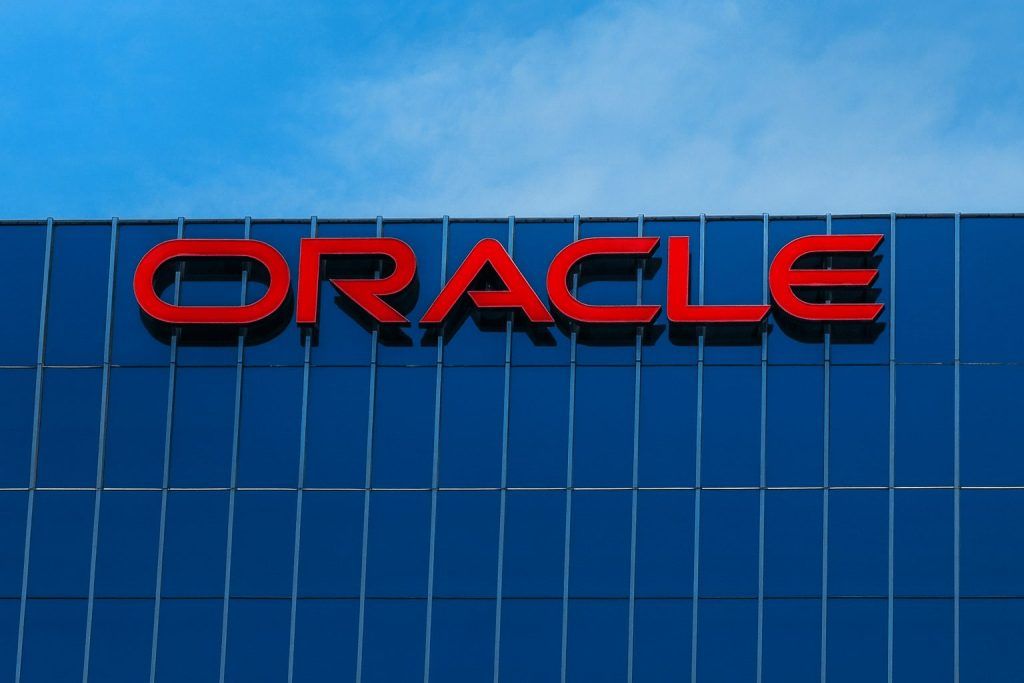Micron Technology stock (NASDAQ: MU) heads into Sunday, November 23, 2025, after one of its sharpest pullbacks of the year, even as Wall Street remains overwhelmingly bullish on the memory-chip maker’s AI opportunity.
As of the latest close on Friday, Micron shares sit around $207.37, up about 3% on the day but still down roughly 16% over the past five trading sessions, with intraday volatility pushing the stock between about $193 and $212 on Friday alone. [1]
Below is a detailed look at all the key Micron headlines and themes investors are watching today, based on news published on November 22 (U.S. time) and the most recent company and analyst updates.
1. Micron Stock Price Today: Where Things Stand
- Last regular-session close (Nov. 22, 2025, U.S. time): about $207.37, up roughly 2.9% on the day. [2]
- After-hours trading: Micron ticked higher to around $208.40, adding another 0.5%. [3]
- 52-week range: roughly $61.54 to $260.58, highlighting how far the stock has come in this AI-driven cycle. [4]
- Market capitalization: around $226–233 billion, depending on the data source and exact price used. [5]
Even after this week’s pullback, multiple outlets note Micron’s staggering year-to-date rally:
- A recent analysis points out that Micron shares have surged about 188% in 2025, making it one of the standout AI-related semiconductor plays of the year. [6]
- Another article highlights that Micron stock is up close to 100% just since August, as investors reprice the company around AI-driven memory demand. [7]
2. Fresh News & Commentary in the Last 24 Hours
a) Wall Street’s view: consensus Buy” and rising price targets
A MarketBeat roundup published November 22 reports that 35 research firms now cover Micron, with: [8]
- 4 Hold” ratings
- 26 Buy” ratings
- 5 Strong Buy” ratings
The average 12-month price target is about $215.64, modestly above Friday’s close. Several recent target hikes stand out:
- UBS: target raised to $275, Buy”.
- Barclays: target raised to $240, Overweight”.
- Wells Fargo: target raised to $300, Overweight”.
- Goldman Sachs: target raised to $180, Neutral”. [9]
In other words, despite short-term volatility, the sell-side narrative remains firmly constructive on Micron’s long-term AI memory story.
b) Institutional activity and insider selling
Another MarketBeat piece from November 22 highlights new institutional and insider data around Micron: [10]
- Mediolanum International Funds Ltd cut its Micron position by 51.1% in Q2, selling 68,020 shares and retaining 65,091 shares valued at just over $8.1 million.
- The article also notes heavy insider selling over the last quarter, with insiders offloading roughly 409,756 shares, worth about $85 million.
- Among those sellers:
- CEO Sanjay Mehrotra
- CFO Mark Murphy
- EVP Scott DeBoer, among others
While insider sales don’t automatically imply trouble, they are contributing to headline risk at exactly the moment when the stock has become more volatile and widely owned.
c) Underrated AI play” vs. fears of a deeper pullback
Opinion pieces published November 22 show how divided sentiment has become after Micron’s rapid run-up and sudden correction:
- A widely shared article calls Micron one of the most underrated artificial intelligence (AI) plays of the decade,” arguing that despite a roughly 188% gain this year, the company’s role in high-bandwidth memory (HBM) and advanced DRAM could continue driving long-term upside. [11]
- A separate Trefis piece titled Would You Still Hold Micron Technology Stock If It Fell Another 30%?” notes that MU is already down about 16% in the last five sessions, and explores whether a further slide would change the long-term investment case. [12]
These contrasting angles capture today’s mood: Micron is seen either as an overextended winner vulnerable to correction—or as a rare, still-attractive AI infrastructure leader despite short-term pain.
d) Valuation debates: Significantly overvalued” by some metrics
On the valuation front, GuruFocus currently pegs Micron’s GF Value” at around $153–154 per share, versus a market price near $207, implying the stock trades at roughly 1.3× its fair-value estimate and is significantly overvalued” on that model. [13]
That doesn’t account for every nuance of the AI cycle, but it’s another data point driving cautionary headlines and feeding the idea that the recent pullback may be a natural response to very stretched expectations.
3. Why Micron Stock Has Been So Volatile This Week
a) Market-wide tech selloff
Thursday, November 20, saw a sharp market-wide tech correction following Nvidia’s blowout earnings and renewed worries about stretched valuations:
- The Nasdaq dropped about 2.2%, while the S&P 500 fell 1.6%. [14]
- As part of that move, Micron tumbled roughly 10.9% on the day, according to a recap of notable S&P 500 movers, making it one of the hardest-hit chip names. [15]
That selloff came on top of already elevated prices for many AI-related stocks, turning Micron into a prime profit-taking target after its multi-month surge.
b) A multi-day slide: nearly 16% in five sessions
Recent coverage notes that Micron is down about 16% over the last five trading days, as investors reassess: [16]
- Whether AI-related memory demand can stay as strong as current forecasts imply
- How aggressive Micron’s capital spending plans should be in a cyclical industry
- The impact of competitive pressure in HBM and DRAM from other memory players
Yet even during this correction, Friday’s bounce and positive after-hours action suggest dip buyers are testing the waters ahead of the next major catalyst: earnings.
4. The Core Bull Case: AI Data Centers and High-Bandwidth Memory
Short-term turbulence is playing out against an unusually strong fundamental backdrop for Micron.
a) Record fiscal Q4 and full-year 2025
On September 23, Micron reported record results for its fiscal 2025 fourth quarter and full year, driven by AI data center demand: [17]
- Fiscal Q4 revenue came in around $11.3 billion, up 46% year over year.
- The company highlighted record full-year revenue, with AI data centers as the primary growth engine.
- Micron guided to sequential revenue growth of roughly $1.2 billion and forecasted gross margins above 50%, much higher than in past downcycles.
A Reuters recap of the same report adds that Micron’s HBM business reached nearly $2 billion in Q4 sales, with an annualized run rate around $8 billion, and that the company expects to sell out its HBM capacity for 2026 in a matter of months. [18]
b) AI-driven guidance above expectations
In that same September update, Micron guided first-quarter fiscal 2026 revenue to about $12.5 billion (± $300 million), comfortably ahead of analyst expectations near $11.94 billion at the time, and projected an adjusted gross margin in the low-50% range, well above prior consensus. [19]
This guidance reinforced the view that the memory cycle is being reshaped by AI, with:
- Data center revenue making up over half of Micron’s business (about 56% of total revenue with gross margins around 52%, according to internal investor materials). [20]
- Traditional PC and smartphone cycles becoming less dominant drivers of earnings.
5. Capex Concerns: The Bear Case in Focus
Not all recent news is upbeat. Several pieces — including an analysis on Investing.com — note that Micron stock fell after commentary about higher capital spending ahead, as the company accelerates its DRAM- and HBM-focused build-out to keep up with AI demand. [21]
A 24/7 Wall St. article this week emphasized that: [22]
- Micron’s stock fell as much as 11% during Thursday’s selloff, briefly breaking below the psychologically important $200 level.
- The ongoing drop is partly tied to investor nerves over a planned ~$18 billion DRAM-focused capex program through fiscal 2026, which some fear could compress returns if the AI boom cools faster than expected.
- At the same time, Wall Street targets remain extremely aggressive, with some firms — like Rosenblatt and Morgan Stanley — citing long-term AI demand to justify targets of $300+ per share.
This tension between huge required investment and huge expected payoff is central to Micron’s risk/return profile today.
6. Company Pipeline & Upcoming Catalysts
Beyond the stock price, Micron has been steadily rolling out products and updates that reinforce its AI positioning:
- Q1 FY26 earnings call scheduled for December 17, 2025 – Micron’s investor relations site confirms the next earnings date, with management expected to update on HBM capacity, DRAM pricing and AI data center demand. [23]
- Automotive UFS 4.1 (G9 NAND-based) – Announced November 13, this product targets AI-enhanced automotive systems, aiming to unlock intelligent mobility” with high-speed, power-efficient storage. [24]
- AI data-center DRAM & SOCAMM2 solutions – Recent press releases detail 192GB low-power DRAM modules and other advanced memory products targeted explicitly at AI servers, underscoring Micron’s strategy to own high-value, high-margin memory niches rather than commoditized bits. [25]
These catalysts matter because any shift in tone — for example, if management moderates capex or further raises HBM pricing — can quickly alter the stock’s narrative.
7. What Today’s Setup Means for Investors
Putting it all together, Micron stock on November 23, 2025 sits at a crossroads:
- Bullish factors
- Record Q4 and full-year results, with AI data center revenue and HBM driving margin expansion. [26]
- First-quarter guidance above Street expectations, hinting at ongoing strength in AI memory demand. [27]
- Broad analyst support, with a consensus Buy” rating and price targets that, on average, sit above the current share price — and in some cases, well above it. [28]
- Bearish / cautionary factors
- A 16% drop in five sessions has reminded investors how quickly sentiment can swing in high-beta AI names. [29]
- Concerns that large capex commitments and the entrance of more HBM competitors could pressure returns later in the cycle. [30]
- Some valuation models now flag Micron as significantly overvalued” relative to historical fundamentals, even if they may not fully capture structural AI changes. [31]
For now, Micron remains one of the most closely watched AI infrastructure stocks on the market, with today’s news flow painting a picture of:
A company delivering record numbers and aggressively investing for an AI future — and a stock trying to find its footing after running far ahead of itself.
As always, this overview is for information and news purposes only and should not be taken as personalized investment advice. Anyone considering Micron stock should weigh their own risk tolerance, time horizon, and broader portfolio before making decisions.
References
1. www.investing.com, 2. www.investing.com, 3. public.com, 4. www.marketbeat.com, 5. www.stocktitan.net, 6. www.nasdaq.com, 7. seekingalpha.com, 8. www.marketbeat.com, 9. www.marketbeat.com, 10. www.marketbeat.com, 11. www.nasdaq.com, 12. www.trefis.com, 13. www.gurufocus.com, 14. www.investopedia.com, 15. www.investopedia.com, 16. www.trefis.com, 17. investors.micron.com, 18. www.reuters.com, 19. www.reuters.com, 20. investors.micron.com, 21. www.investing.com, 22. 247wallst.com, 23. investors.micron.com, 24. investors.micron.com, 25. investors.micron.com, 26. investors.micron.com, 27. www.reuters.com, 28. www.marketbeat.com, 29. www.trefis.com, 30. 247wallst.com, 31. www.gurufocus.com









